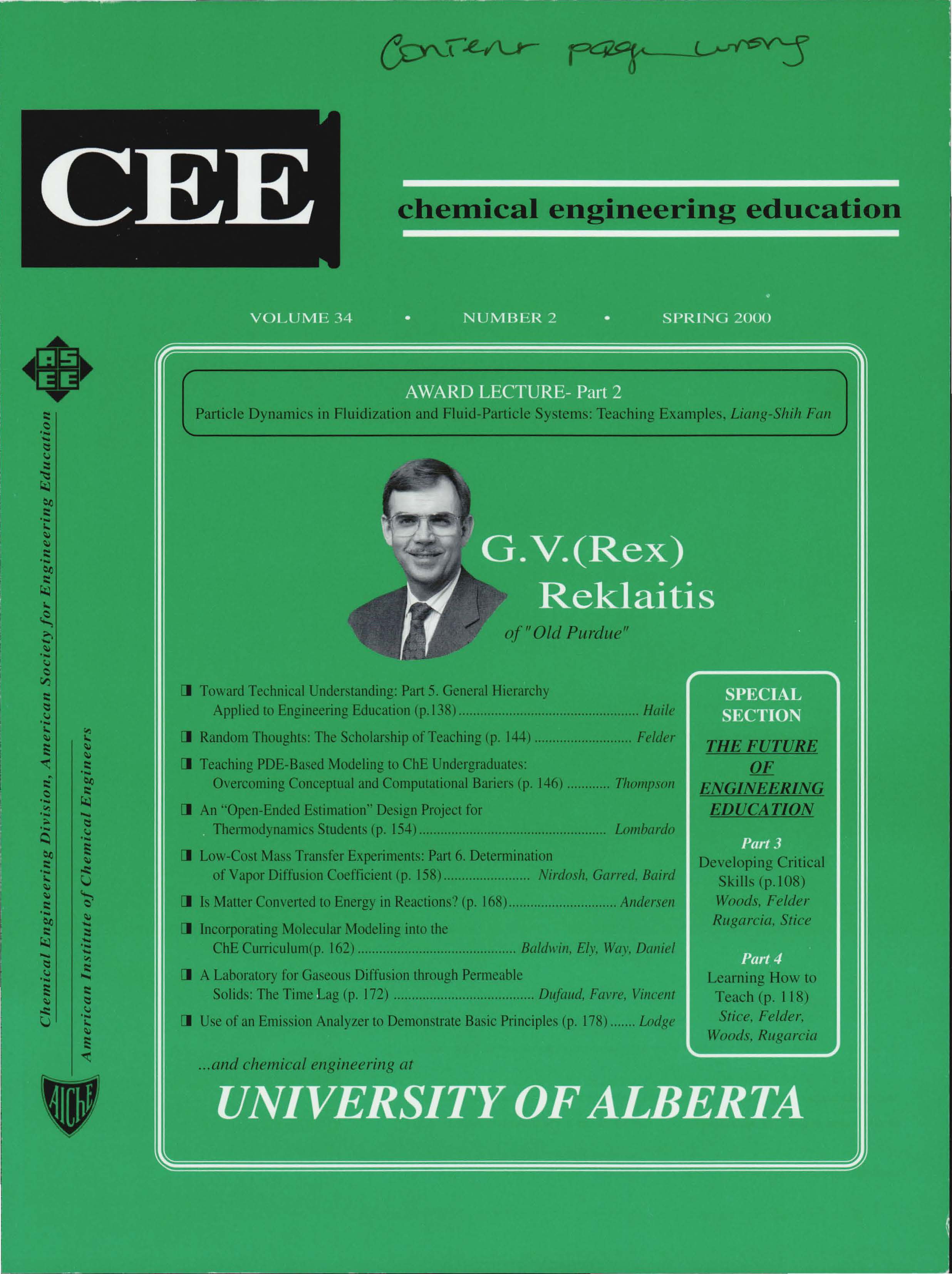Teaching PDE-Based Modeling to ChE Undergraduates: Overcoming Conceptual and Computational Barriers
Abstract
While PDEs are of great importance for chemical engineering modeling, the topic is difficult to address at the undergraduate level. Reasons for the problem include the difficulty of solution methods and that the chemical engineering curriculum contains no spot for extensive mathematical groundwork. When the opportunity does arise for a more in-depth treatment (e.g., a modeling course), details of the complicated solution techniques can overwhelm important general concepts that are important for a good understanding. In this paper we discuss the effective use of modern numerical software to remove computational barriers, thus enabling more classroom time to be devoted to general behavior and overcoming conceptual barriers. The approach has twofold intent: first to provide a better foundation for the students, and second, to encourage the use of more realistic engineering problems in homework and/or class examples. Three example problems are given at the end of the paper that illustrate ways to simultaneously address computational and conceptual issues.


